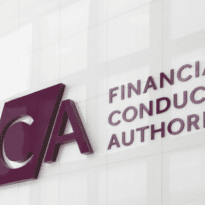The final sitting of R06 2023 will soon be here. Natalie Dawes, Academy Support Adviser at Bespoke Training Solutions, offers some help with some of the common questions asked about the exam.
For an exam that’s only available to sit just once per quarter, it sure feels like each of the four sittings come round quick. I absolutely love this exam – it’s been referenced that I have a ‘unique fondness’ and I’d say that’s a pretty accurate description of my feelings towards it!
I think it comes from my own experience of R06, it being the final piece of my DipPFS puzzle and an opportunity to bring all of the knowledge I’d built up over time, together. I really got into my sitting, I treated the case studies as if they were actual clients of mine and tried to bring as much realism to them as was possible.
Beyond my own exam, which I did pass, I actively involved myself in future case study releases, which I guess shows the ‘unique fondness’. This has only been heightened through joining the team at BTS last year. Now, I have a really valid excuse to get as excited as I do, when the next sitting of this exam is looming, which of course is not too far away. The new set of case studies will be released on 15 September 2023 and I am really looking forward to seeing what they have in store.
My R06 observations
Where I’ve had so many conversations about R06 with candidates now, I’ve noticed a real trend in the types of questions we get asked. Of course, these questions can vary when they’re specific to the case studies but with every sitting, candidates have many generic aspects of the exam they’d like clarified.
On the basis that the next exam will soon be here, we thought it would be useful to share some of these frequently asked questions, so here’s our top ten…
One
Q: How do we access the case studies?
A: The CII release the exam case studies two and a half weeks before the exam sitting, usually on the Friday morning around 8am. You can access them via the CII website, on their supporting exam documents page, here: Supporting exam documents (cii.co.uk). Please make sure you do this, don’t wait to be notified by the CII that they are available – maximise the time that you have with them!
Two
Q: When should I start my R06 revision?
A: As soon as possible. The CII recommend 100 hours of study for this exam. Do not wait until the case studies are released to start your preparations. In the weeks and months leading up to this date, focus your energies on the study guide, past papers, examiners comments, revising weaker technical areas. The last couple of weeks before the exam, you’ll want to be focussing on your case studies.
Three
Q: Can we use bullet points to answer questions in the exam?
A: Yes, we encourage you to do so. The word processor in the exam is quite basic though so you’ll need to use dashes instead. Make sure you visit the exam familiarisation on the CII website to have a look at the exam system for written exams, so you don’t waste time in your exam getting to grips with the system. You can access the familiarisation test here: Exam familiarisation for on-screen written exams by remote invigilation (cii.co.uk)
Four
Q: Would you still get marks if you put down two different solutions to a question?
A: Some question stems will require you to answer with different/multiple solutions, albeit avoid contradictory answers as this may show the examiner that you are not sure. Plan your answers and have courage in what you are writing. Avoid using language such ‘The clients could’ and relace with more confident wording such as ‘I recommend’.
Five
Q: Do the examiners want to see workings of any calculations?
A: It does depend on the question stem. Generally, rather than write out a calculation, you’ll likely be asked to describe the process of a calculation or explain the steps of a calculation. Therefore, showing your working will naturally fall into this because you have to clearly write down what each step is. Always try to do these steps in order too, firstly to make sure you don’t miss anything and secondly to show the examiner you know what you are doing – makes for easier marking too!
Six
Q: If a question asks us to list a certain amount of right answers (i.e. ‘list five advantages and five disadvantages of….’), do we only list five of each, or should we write as many as we can think of?
A: Using the example given, the question will normally show the marks available as 10, meaning you’d want to get down at least five advantages and five disadvantages. Always write down more if you can, to maximise your chances of obtaining full marks. It’s a positively marked exam so you won’t be penalised for incorrect answers.
Seven
Q: In the CII examination guide, the model answers consist of very brief bullet points, not sentences. Should we be expanding these rather than just the short bullet points?
A: For a level four exam, which this is, you will not be expected to go into great depth. Having said that, the length of your answer really depends on the question stem. For example, with an ‘explain’ question, you are expected to make your point, then explain it – this will make for a longer response than other question stems such as ‘list’ questions. Definitely quality over quantity.
Eight
Q: How long should we spend on each question?
A: One mark per minute is a great strategy. Using a 20-mark question as an example, don’t spend longer than 20 minutes on it. You’ll find that your ‘response rate’ to writing down another answer slows, with the more you have managed to get down. If you feel yourself pondering or having to dig really deep for further answers, move onto the next question, you can always come back to the question later.
Nine
Q: Is there anywhere we can view past papers?
A: The CII have a handful of papers (they call them examination guides) available to download on the R06 page, you can find them here: Financial Planning Practice (R06) (ciigroup.org) These examination guides include examiners notes, model answers and the full specimen paper for you to have a go at. These are all really useful tools for your R06 preparation, so get your hands on as many as possible to help you understand where candidates have done well, where they’ve fallen short, the examiner’s idea of a good answer and the sorts of questions that come up. BTS have many more exam guides that we can send you if you need more than those available on the CII website – just give us a shout.
Ten
Q: Are the case studies worth the same number of marks and what’s the minimum number of marks per question?
A: There are 150 marks available on the R06 paper – split over the two case studies as best as is possible. Sometimes this will be evenly split, other times it will be slightly outside of this. In April 2023, case study one carried 76 marks and case study two carried 74 marks. In terms of min/max marks per questions – this is impossible to answer with having no idea what will come up. Sometimes questions carry heavy marks such as 20, other times it’ll be 6. It really depends on the subject matter and question stem. Use the ‘one mark per minute rule’ to guide you.
I hope you’ve found our top ten questions on all things R06 useful. We are always happy to chat to candidates about exams (obviously!) so do always feel free to get in touch – there’s no such thing as a silly question and believe me, when I was sitting R06 myself, I had many questions, all of which were answered by BTS themselves, which really helped me prepare for my exam – and of course, pass!
Bespoke Training Solutions have been supporting regulated exams for 20 years this year! Known as ‘the exam experts’ within the industry, BTS provide support for the CII regulated exams by way of study guides, e-learning resources, and workshops for the full R0 suite and many AF units.
Visit https://www.bespoketrainingsolutions.com and check out the brand-new Careers Zone for study plans, answers to exam FAQs and lots more to support your journey.
































